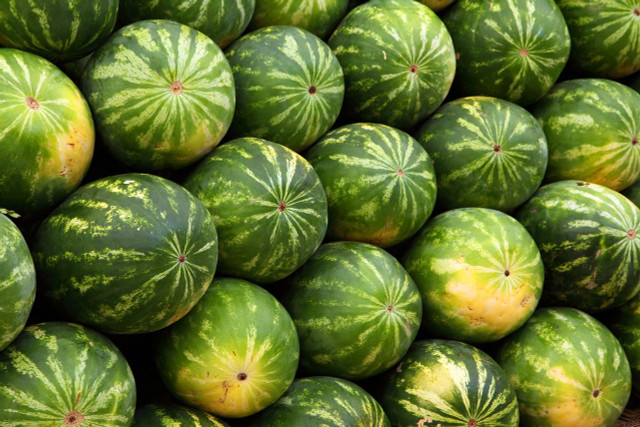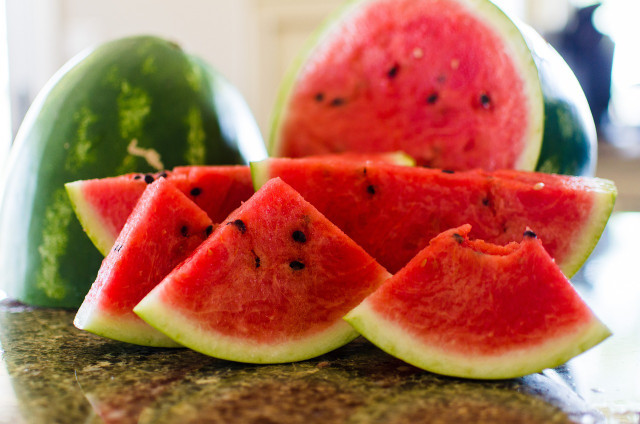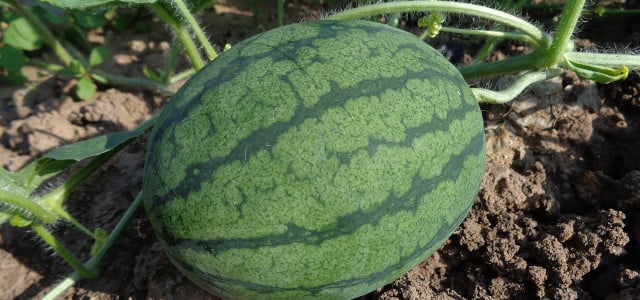Maximize the flavor of your home-grown watermelons! Learn when to pick watermelon for the best taste and texture, and how to keep them fresh longer.
Growing your own fruits and vegetables can be a rewarding activity, but it can also be frustrating if you don’t know when to harvest for the best results. When it comes to growing watermelon, you’ll want to try companion planting and ensure you have a spot with plenty of sunshine and heat — this helps to increase the sweetness.
Watermelon is an easy summer fruit to grow that matures approximately 80 days after planting, though this may vary depending on the variety you’re growing — check your seed packet for more detailed information. In order to figure out when to pick watermelon, you’ll want to start checking it daily from day 75 onwards so you don’t miss the prime harvesting day.
Watermelons do most of their ripening during the last two weeks of growth and don’t continue to ripen once picked, so it’s important to ensure yours is ripe before you cut it away from the plant.
Note: If you’re buying a watermelon from your local farmers’ market, check out our guide — 7 Foolproof Ways to Tell If a Watermelon is Ripe + FAQs
Visual Clues for When to Pick Watermelon

First-time gardeners shouldn’t rely on the “thump test”: Unless you are a seasoned gardener, this commonly suggested test to decide when to pick a watermelon will not be useful for you. This goes off the basis that an unripe watermelon will produce a metallic sound when thumped while a ripe one will sound hollow. The subtle nuance of these two sounds isn’t something first-time gardeners can generally pick up. That’s why it’s important to focus on visual clues that show you when to pick a watermelon for peak ripeness.
When a watermelon is ready for harvest, you’ll notice the following signs:
- The shiny appearance you’ve gotten used to seeing over the summer has turned dull.
- The curly green tendrils will start to yellow and turn brown — this indicates that the plant is no longer feeding and is nearly ready for harvest.
- The underside (or field spot) of the watermelon will have a creamy/yellowy color to it.
- On striped varieties, the difference in colors will become stronger and more defined leading up to harvest.
Although not a visual clue, you can gently pick up your melon to feel its weight — a ripe watermelon will feel surprisingly heavy. Another physical hint that the melon is ready to harvest is to poke the blossom end. If it’s hard, the watermelon is unripe, but if there’s a bit of give, your watermelon is ready.
Harvesting and Storing Tips and Tricks



When the time has come to harvest your melon, make sure to:
- Use a sharp and clean knife to cut it off the vine.
- Leave at least two inches of the stem connected to your watermelon.
You have several options for storing the watermelon:
- Freshly harvested watermelon can be stored at room temperature for approximately one week, and up to two weeks in the fridge.
- Storing cut watermelon requires refrigeration in order to preserve the freshness, so ensure you have enough fridge space before you dig in.
- Alternatively, you can freeze watermelon for later use in drinks like watermelon punch, juice pops or summer spritz cocktails.
- If your yield is greater than you know what to do with, why not share it with friends, family or neighbors? Just remind them to throw out the rinds — you can reduce food waste with our 4 watermelon rind recipes or try your hand at watermelon kimchi for a summery twist on this Korean classic.
Read more:
- Peach Punch: Classic & Virgin Recipe
- The 9 Best Eco-Friendly Summer Activities For Adults
- Chemical vs. Physical Sunscreen: What’s the Difference and Which Should You Choose?
- Are Apple Seeds Poisonous? It’s Complicated
Do you like this post?







